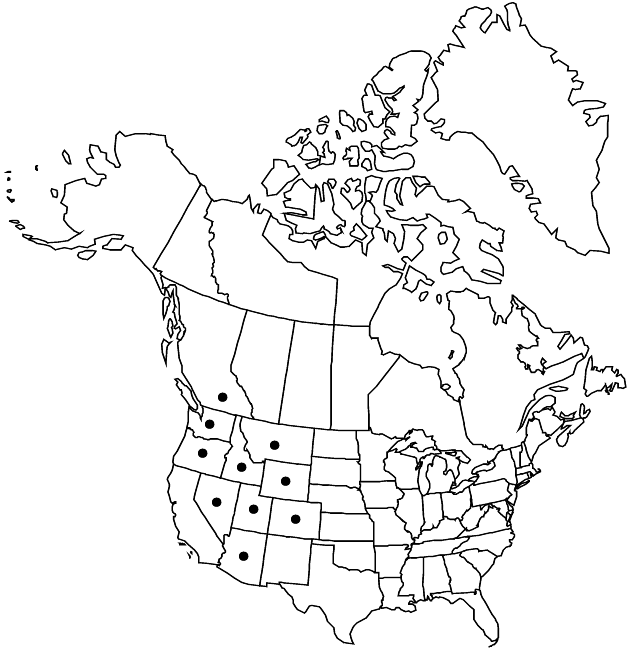Difference between revisions of "Helianthella uniflora"
Fl. N. Amer. 2: 334. 1842.
FNA>Volume Importer |
FNA>Volume Importer |
||
| Line 58: | Line 58: | ||
|publication year=1842 | |publication year=1842 | ||
|special status= | |special status= | ||
| − | |source xml=https://jpend@bitbucket.org/aafc-mbb/fna-data-curation.git/src/ | + | |source xml=https://jpend@bitbucket.org/aafc-mbb/fna-data-curation.git/src/f50eec43f223ca0e34566be0b046453a0960e173/coarse_grained_fna_xml/V19-20-21/V21_280.xml |
|tribe=Asteraceae tribe Heliantheae | |tribe=Asteraceae tribe Heliantheae | ||
|subtribe=Asteraceae (tribe Heliantheae) subtribe Ecliptinae | |subtribe=Asteraceae (tribe Heliantheae) subtribe Ecliptinae | ||
Revision as of 20:36, 16 December 2019
Plants 40–120 cm. Cauline leaves: largest at mid stems; blades usually 3-nerved, usually lanceolate to elliptic, rarely ovate, 12–25 cm, faces puberulent, hirsute, or scabrous. Heads usually borne singly, sometimes 2–3+, erect. Involucres turbinate to hemispheric or broader, 15–30 mm diam. Phyllaries lanceolate to lance-linear (subequal or outer larger, margins sometimes ciliate, faces ± cinereous-pubescent to sparsely puberulent). Paleae chartaceous, relatively firm. Ray florets 11–13(–21); laminae 15–30(–45) mm. Disc corollas yellow. Cypselae strongly compressed, narrowly obovate (margins ciliate, faces strigose); pappi of 2 ± subulate scales plus 2–4 shorter scales. 2n = 30.
Phenology: Flowering May–Jul(–Aug).
Habitat: Grasslands, meadows, sagebrush scrublands, swales, aspen forests, rocky slopes, and spruce-fir forests
Elevation: 300–3400 m
Distribution

B.C., Ariz., Colo., Idaho, Mont., Nev., Oreg., Utah, Wash., Wyo.
Discussion
Two infraspecific taxa within Helianthella uniflora may be distinguished; they have been named at varietal rank.
Variety douglasii has stems hirsute; involucres (15–)20–25(–30) mm diam.; outer phyllaries rarely elongated, margins ciliate, abaxial faces sparsely puberulent; ray laminae 30–40 mm; and 2n = 30. It grows in grasslands in the northern Rocky Mountains and on the east side of the Cascade Range (B.C.; Idaho, Oreg., Wash.) at 300–2500 m where it flowers May–Jul.
Variety uniflora has stems sparingly puberulent to scabrous; involucres 15–20(–25) mm diam.; outer phyllaries frequently elongated, margins not ciliate, abaxial faces uniformly cinereous-pubescent; ray laminae 20–30 mm; and 2n = 30. It grows in meadows, sagebrush scrublands, swales, aspen forests, rocky slopes, and spruce-fir forests of the Rocky Mountains, intermountain plateaus, and Great Basin ranges (Ariz., Colo., Idaho, Mont., Nev., Oreg., Utah, Wyo.) at 1500–3400 m, where it flowers (May–)Jun–Jul(–Aug).
Selected References
None.